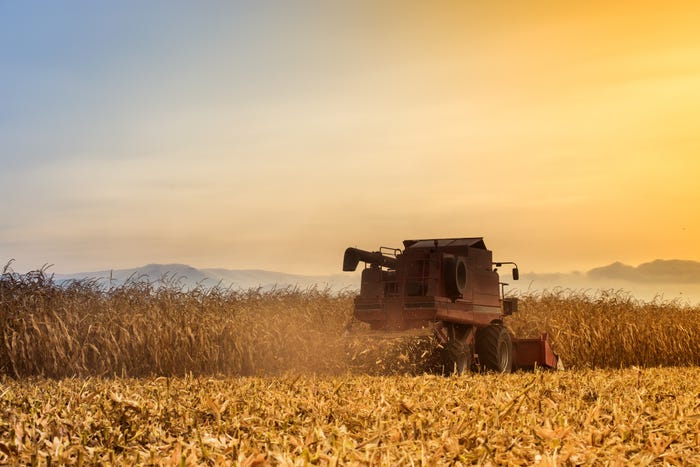
The 2017 corn harvest started slower than average, but warmer-than-normal temperatures across the Midwest for the past few weeks have led to plenty of speculation that the pace of harvest might have a chance to catch up to seasonal averages. Would the latest USDA Crop Progress report results validate that assumption?
For the week ending Sept. 24, USDA indicates the corn crop is still a bit behind. Crop maturity came in at 51%, versus 70% in 2016 and 64% for the five-year average. And harvest progress came in at just 11%, lower than the trade estimate of 14%, 2016’s pace of 14% and the five-year average of 17%. Harvest is furthest along in North Carolina, Texas, Tennessee, Kentucky and Missouri (in that order).
The overall percent of the corn crop rated good to excellent this year remains unchanged at 61%, although good-rated corn slipped from 48% to 47%, and excellent-rated corn bumped up from 13% to 14%.
“Our estimate of corn yields gained 0.4% bushel per acre, with both nationwide and state by state ratings improving,” according to Farm Futures senior grain market analyst Bryce Knorr. “State ratings suggest a yield of 164.3 bpa, with the nationwide tally at 166.1 bpa.”
After soybean ratings dropped slightly for two straight weeks, conditions reversed that trend for the week ending Sept. 24. Now, 60% of the crop is rated good to excellent, versus 59% one week prior. Only 12% of the crop is rated poor or very poor, with the remaining 29% rated fair.
Unlike corn, soybean’s harvest progress is more in line with seasonal averages. This year’s crop is 10% harvested, compared with 9% in 2016 and 12% for the five-year average. Harvest has progressed furthest in Louisiana, Mississippi, Arkansas, Indiana and Nebraska (in that order).
“Just like corn, soybeans also showed modest gains, up about a tenth of a bushel per acre overall,” Knorr says. “Our estimate based on the national rating is 48.3 bpa, with the state-by-state report showing a yield at 47.1 bpa.”
The 2017-18 winter wheat crop is now nearly one-quarter planted, at 24%. That’s slightly behind the pace set by 2016 and the five-year average, which are both 28%.
Sorghum harvest also continues to make slow-but-steady progress. For the week ending Sept. 24, harvest was 32% complete, in line with 2016 and the five year average, which are both 33%. Sixty-four percent of that crop is rated good to excellent, down 1% from the week prior.
About the Author(s)
You May Also Like






